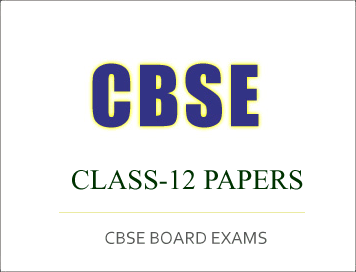CBSE Class-12 Question Papers for IOP/Comptt Examination 2017 : All India Scheme, Food & Beverage Cost & Control
Disclaimer: This website is NOT associated with CBSE, for official website of CBSE visit - www.cbse.gov.in

CBSE Class-12 Question Papers for IOP/Comptt Examination 2017 :
All India Scheme, Food & Beverage Cost & Control
CBSE Class-12 Question Papers for IOP/Comptt Examination 2017 : Food & Beverage Cost & Control
FOOD PRODUCTION – III
FOOD & BEVERAGE COST & CONTROL
Time allowed : 3 hours
Maximum Marks : 60
Instructions :
Read the paper carefully. All questions in each section are compulsory. Students may use bilingual mediums (both English and Hindi) for writing, in which technical terms should be written in English medium.
(i) Marks for questions are indicated against each.
(ii) Questions carrying 1 mark are very short-answer questions, required to be answered in one sentence each.
(iii) Questions carrying 2 marks are short-answer questions. Answer to them should not exceed 20-30 words each.
(iv) Questions carrying 3 marks are also short-answer questions. Answer to them should not exceed 40-60 words each.
(v) Questions carrying 4 marks are short-answer questions. Answer to them should not exceed 60-70 words each.
(vi) Questions carrying 5 marks are long-answer questions. Answer to them should not exceed 100-120 words each.
1. What will happen if sale is equal to the total cost ?
2. Give any two examples of period costs.
3. Write two advantages of FIFO.
4. Which copy of BOT is given to cashier ? Why ?
5. What do you understand by Re-chef ?
6. Name the two stages of volume forecasting.
7. What is the storage temperature of tomatoes and shell-fish ?
8. Which form is filled by the store keeper for issuing goods ?
9. Give two examples of food wastage during food preparation.
10. Profit of a hotel depends on correct purchase. Support this statement with the help of four examples.
11. Explain uncontrollable costs with the help of any two examples.
12. Write two important aims of purchasing.
13. Identify four ways a cashier of a hotel may be involved in frauds.
OR
In what four ways can an accountant prevent frauds in a hotel ?
14. What do you understand by ullage ? How are they handled ?
15. List any four important equipments used by the receiving department.
16. Draw the format of Visitor Tabular Ledger. Why is it made ?
17. Suggest six ways to control cash receipts in a hotel.
18. What is average price ? Calculate weighted average price per packet from the following information : 100 packets of baby corn were purchased at the rate of ₹ 10 per packet and 500
packets of baby corn were purchased at the rate of ₹ 8 per packet
19. Write any six objectives of sales control.
20. Describe six obstacles which can occur during food cost control.
21. What is cash purchase ? Write its six advantages.
OR
List eight clauses which should be included in a purchase contract.
22. How and why are purchase order and goods receiving book made ?
OR
Draw a format of a meat tag. What is the purpose of making this ?
23.Write four reasons for stock taking. Find out the stock turnover from the following data.
Value of opening stock – 4000
Value of closing stock – 2000
Cost of food consumed in a month – 60,000
24. Describe the purpose of food cost accounting in detail.
OR
Classify the costs on the basis of their functions and briefly explain each cost.
25. What is a standard recipe ? Describe its importance in detail.